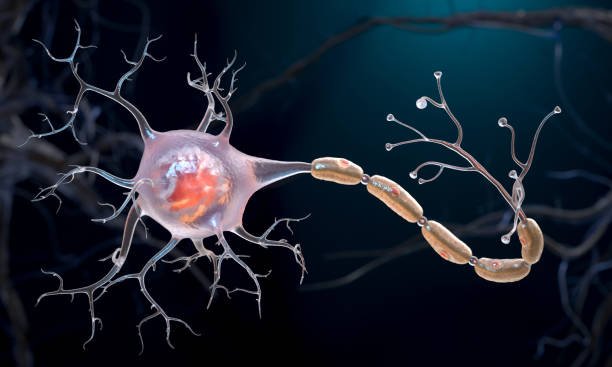
The process of memory storage and retrieval is a fascinating and complex function of the brain. Memory is an essential component of cognition, allowing us to learn, adapt, and create a sense of identity. This process involves multiple systems working in harmony, from encoding to retrieval. Let’s explore how memory works, focusing on the physiology of memory, and the various brain structures and systems that enable us to store and retrieve information.
1. Overview of Memory Types
Memory can be classified into different types based on the duration and the content of the information stored:
- Short-term memory: This refers to the temporary storage of information for a few seconds or minutes. It allows for immediate tasks such as solving math problems or remembering a phone number briefly.
- Long-term memory: Information stored for longer periods, ranging from hours to decades, is considered long-term memory. This type of memory includes both explicit memory (declarative memory) and implicit memory (procedural memory).
- Working memory: This is a type of short-term memory involved in reasoning and decision-making. It acts as a mental workspace where the brain processes and manipulates information.
2. Stages of Memory Processing
Memory formation involves three key stages: encoding, storage, and retrieval.
Encoding
Encoding is the first step of the memory process, where sensory input is transformed into a form that can be stored in the brain. The brain processes information from various senses—sight, sound, touch, taste, and smell—and converts this data into neural codes. Encoding can be influenced by attention, emotion, and repetition.
There are different types of encoding:
- Visual encoding: Involves storing images or visual information.
- Acoustic encoding: Refers to the encoding of auditory information, such as sounds or spoken words.
- Semantic encoding: Focuses on the meaning of information, like understanding a concept or a fact.
Repetition and meaningful associations often enhance encoding, as they help establish stronger neural connections.
Storage
Once encoded, the information must be stored in the brain. Storage refers to the maintenance of information over time. The physiology of memory plays a significant role in determining where and how memories are stored. Long-term memory storage involves structural changes in the brain’s neural networks.
Storage occurs in two primary stages:
- Short-term storage: This type of memory is transient and typically stored in the prefrontal cortex. It can hold information for a limited duration (about 15–30 seconds) and a limited capacity (7±2 items).
- Long-term storage: Long-term memories, once consolidated, are stored in different areas of the brain, such as the hippocampus, cortex, and cerebellum. These memories can last for years or even a lifetime.
Retrieval
Retrieval is the process of accessing stored memories when needed. For memories to be recalled, they must be activated by the correct cues or stimuli. Retrieval can be:
- Recall: Reproducing information from memory without cues (e.g., answering an essay question).
- Recognition: Identifying information from options or stimuli (e.g., multiple-choice tests).
Retrieval is often influenced by context, emotional state, and repetition.
3. The Physiology of Memory
The physiology of memory is essential in understanding how memories are encoded, stored, and retrieved. This involves the coordinated activity of various brain regions and neural mechanisms. The brain has specialized systems responsible for different types of memory processing.
The Role of Neurons and Synaptic Plasticity
Neurons, the basic building blocks of the brain, play a crucial role in memory. When we learn new information, synaptic connections between neurons are strengthened or weakened. This process, known as synaptic plasticity, is the foundation for memory formation.
- Long-term potentiation (LTP): This is the process by which repeated stimulation of neurons strengthens synaptic connections. LTP is especially important for long-term memory formation, as it increases the efficiency of neural transmission.
- Neurotransmitters: Chemicals like glutamate, dopamine, and acetylcholine facilitate communication between neurons. These neurotransmitters are essential for memory processes, with each playing distinct roles in different memory types.
Hippocampus: The Memory Hub
The hippocampus, located in the medial temporal lobe, is a critical structure for memory, especially in encoding and consolidation of long-term memories. Damage to the hippocampus can result in an inability to form new memories, a condition known as anterograde amnesia.
The hippocampus does not store memories permanently but plays a key role in converting short-term memories into long-term ones, a process known as memory consolidation. Once memories are consolidated, they are distributed to various cortical areas for long-term storage.
Prefrontal Cortex: Working Memory and Decision Making
The prefrontal cortex is involved in higher cognitive functions, such as reasoning, decision-making, and working memory. Working memory is the ability to hold and manipulate information over short periods. The prefrontal cortex interacts with other brain regions, such as the hippocampus, to coordinate memory retrieval and use.
Damage to the prefrontal cortex can impair working memory and executive function, leading to difficulties in planning and reasoning.
Amygdala: Emotional Memory
The amygdala is a small, almond-shaped structure located in the brain’s temporal lobe. It plays a key role in processing emotional memories. Memories with strong emotional content, such as fear or happiness, tend to be more vivid and easier to retrieve because of the amygdala’s involvement. The amygdala interacts with the hippocampus to encode these memories.
The physiology of memory in the amygdala shows that emotional arousal triggers the release of stress hormones, such as adrenaline and cortisol, which strengthen the consolidation of emotional memories. This explains why emotionally charged events, such as weddings or traumatic experiences, are often remembered in great detail.
Cerebellum and Basal Ganglia: Procedural Memory
Procedural memory, a type of implicit memory, involves the learning and recall of skills and habits (e.g., riding a bike, playing a musical instrument). The cerebellum and basal ganglia are critical for this type of memory.
- Cerebellum: Responsible for coordinating motor movements and fine-tuning actions. It helps in the learning of motor skills.
- Basal ganglia: Involved in habit formation and automatic behaviors, such as typing or walking.
The physiology of memory in these structures demonstrates that implicit memory is processed differently from explicit memory, relying less on the hippocampus and more on subcortical regions.
4. Memory Consolidation and Sleep
Sleep is a vital component in the memory consolidation process. During sleep, particularly in the deeper stages, the brain processes and organizes information gathered during the day. Memories are reactivated and transferred from the hippocampus to other regions of the brain for long-term storage.
- REM sleep: This stage is associated with emotional memory processing. Memories of emotional experiences tend to be consolidated during REM (rapid eye movement) sleep.
- Non-REM sleep: Particularly deep sleep (slow-wave sleep), is important for consolidating declarative memories, such as facts or concepts learned throughout the day.
Studies have shown that lack of sleep impairs memory retention and retrieval, highlighting the importance of sleep in maintaining cognitive function.
5. Factors Affecting Memory Storage and Retrieval
The efficiency of memory storage and retrieval can vary significantly from person to person and can be influenced by several factors:
Attention and Focus
For memory to be effectively encoded and stored, attention is crucial. Divided attention, multitasking, or distractions during the encoding process can lead to incomplete or faulty memory storage, making retrieval more difficult.
Emotions and Stress
Emotional arousal, as previously mentioned, can enhance memory formation. However, chronic stress and anxiety can negatively impact memory, especially by affecting the hippocampus and prefrontal cortex. Stress hormones like cortisol can impair the encoding and retrieval of memories.
Repetition and Practice
Repeated exposure to information strengthens neural connections, making it easier to retrieve information. This is why studying and practicing skills over time, rather than cramming, leads to better memory retention.
Context and Retrieval Cues
Memories are often linked to specific cues or contexts. Being in the same environment or state of mind as when the memory was formed can make retrieval easier. This is known as context-dependent memory.
Aging and Neurodegeneration
As we age, the efficiency of memory storage and retrieval declines. This is partly due to changes in brain structure and function, such as reduced synaptic plasticity and the loss of neurons in areas like the hippocampus. Neurodegenerative diseases like Alzheimer’s can severely impair memory by disrupting the normal physiology of memory processes.
6. Improving Memory
Given the complexity of the physiology of memory, there are several strategies to enhance memory function:
- Repetition and Active Learning: Repeated exposure to information, along with active learning techniques like summarizing and teaching others, can strengthen memory.
- Healthy Lifestyle: Physical exercise, a balanced diet, and adequate sleep support brain health and improve memory.
- Mindfulness and Stress Reduction: Managing stress through mindfulness practices or meditation can help protect memory functions by reducing the impact of stress hormones on the brain.
- Cognitive Training: Engaging in puzzles, games, or learning new skills can improve cognitive functions and memory.
7. Conclusion
Memory storage and retrieval are intricate processes supported by various brain structures and systems. Understanding the physiology of memory allows us to appreciate the complexity of how the brain encodes, stores, and recalls information. Factors like sleep, attention, emotion, and neuroplasticity all contribute to the effectiveness of memory processing. By adopting practices that support brain health, we can improve memory function and maintain cognitive vitality throughout life.
click Here to visit the website






